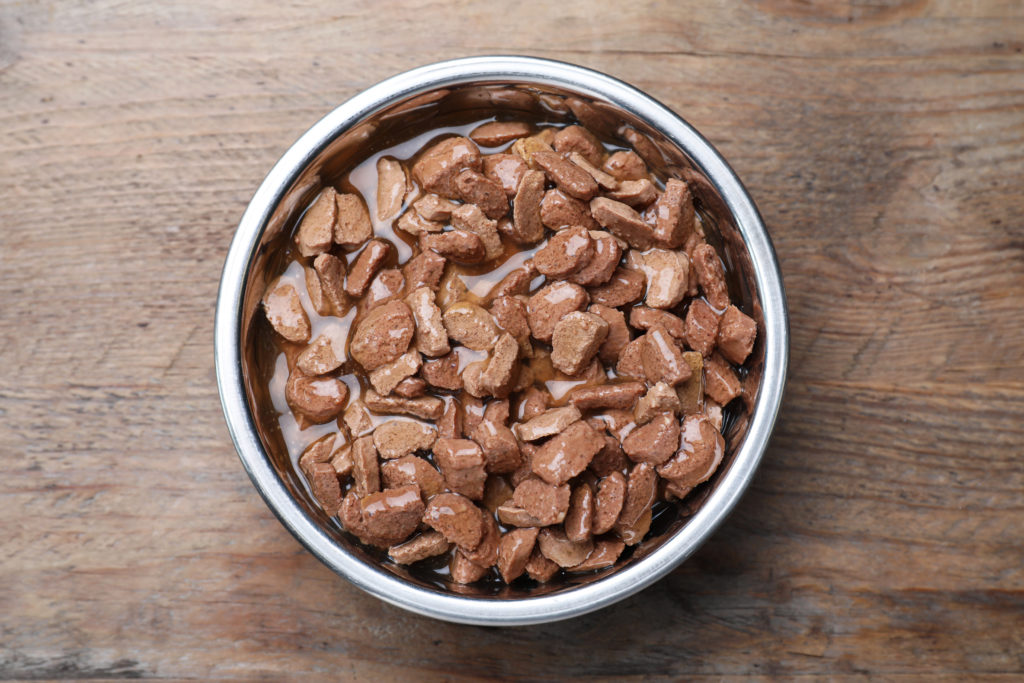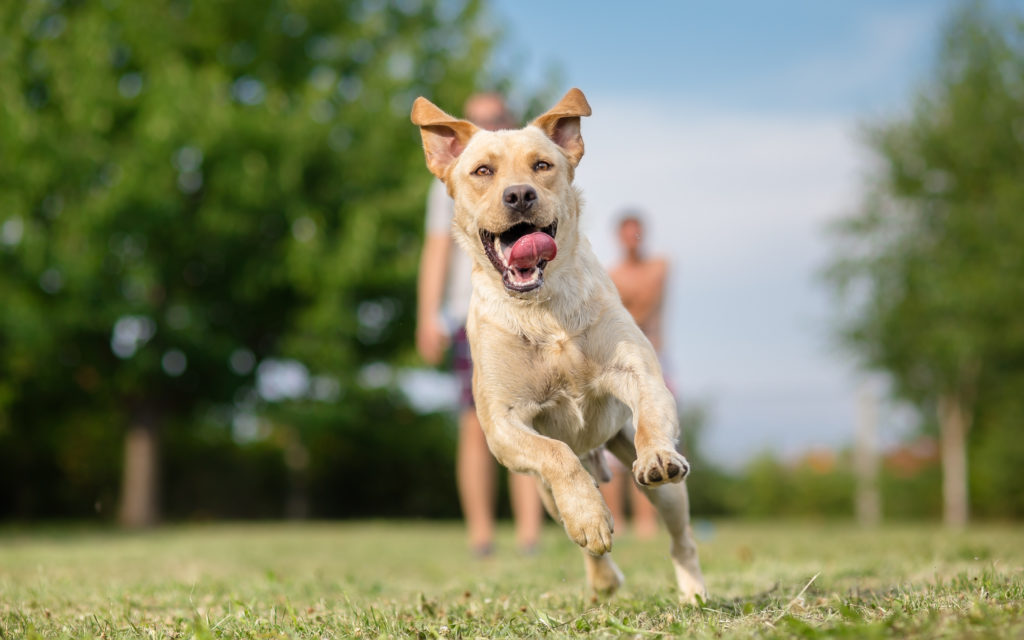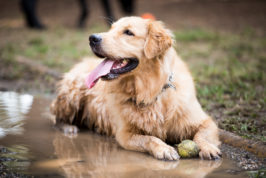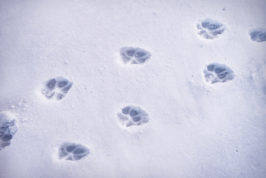A Dog’s Dinner: Guide to a healthy balanced diet
As pet owners, we all want to know that we are giving our dogs the best possible food. We want our dogs to enjoy their food, but we also want them to receive the nutrients they need to maintain good health. With so many options available these days, and so many dog lovers speaking out about what they think is best, it can be tricky to know which diet to choose. The choice is almost endless, from traditional dry and wet dog foods to homemade, boutique and raw diets. So, how do you make an informed decision about the best diet for your dog? What is the healthiest diet for dogs?
What is a healthy diet for a dog?

No matter the formulation, the key to a healthy doggy diet is a good balance of nutrients.
You might not be surprised to hear that dogs need protein in their diet to grow and repair their body tissues. Again, unsurprisingly, they require a source of carbohydrates to give them energy for walks, runs and playtime. However, you might not expect dogs to need fat in their diet. After all, fatty diets lead to obesity, don’t they? But as much as a diet high in fat can cause weight gain, pancreatitis and strain on joints and internal organs, small amounts of ‘good fats’ are vital for your dog’s health. Essential Fatty Acids like Omega 3 and 6 are necessary to keep every part of your dog healthy, including their skin, joints, eyes, brain and immune system.
As well as protein, carbohydrates and good fats, a healthy dog diet should contain vitamins and minerals. For instance, calcium is essential for the health of your dog’s heart, bones, teeth, nails and nervous system. Potassium is needed for the conduction of impulses throughout the heart, muscles and nervous system. Vitamin A helps to keep your dog’s eyes, coat, skin, muscles and nervous system healthy.
There are many nutrients that your canine companion needs in their diet to keep their body healthy, but it’s not as simple as finding a diet that contains all of them. The nutrients need to be present in the right amounts because too much or too little can cause severe illness or deficiencies. Even the balance between the nutrients is important. For instance, the ratio of calcium to phosphorus is essential – too much of one, and the delicate balance is upset, causing problems.
What are the diet options available?
It can seem daunting when faced with so many brands and formulations, each claiming to be the best diet for your dog. Beware of brands using phrases like ‘natural,’ ‘grain-free,’ ‘low protein,’ ‘hypoallergenic,’ and other on-trend words. These claims may not be completely accurate. Even if they are, they might not automatically make them the most appropriate diet for your dog’s needs. So, if you plan on choosing a diet that is free from or low in a nutrient, check with your veterinarian that it’s a healthy choice for your furry friend.
The basic options when it comes to feeding your dog are wet food, dry food, homemade food, and raw food. What should you feed your dog? What are the benefits of each option? And what should you be aware of before you choose?
Dry food diets for dogs

Most commercial dry dog foods are nutritionally complete diets. This means that the ingredients have been researched and formulated to provide the necessary amounts of each vital nutrient. This means that, aside from using the packet guidelines to work out what portion to offer your pooch, you can relax, reassured in the knowledge that your pet is getting what they need. To be classified as a ‘complete and balanced’ diet, any dog food must meet EU legislation and the European Pet Food Industry Federation (FEDIAF) or AAFCO (US) guidelines. Therefore, it’s worth choosing a dry food that uses the term ‘complete and balanced’.
One of the main benefits of dry food, compared to wet food, is that may keep your dogs’ teeth healthier for longer. This is because the abrasion of the biscuits against the teeth during chewing removes plaque and bacteria.
Dry food diets are packed full of calories and nutrients, so your dog won’t need to eat so much of them to maintain a healthy weight. This can be tough for dogs with a large appetite since they may not feel full at the end of each meal at first. However, if your dog has trouble with an expanding waistline, you can still feed them dry food; just try to choose a low-fat or light version.
Wet food diets for dogs

Most wet food diets are also nutritionally complete and tend to come either in pouches, trays, or cans. They also reassure owners that their beloved pet is having all of the vitamins and minerals that they need in the right amounts. However, some wet foods are classified as ‘complimentary’, meaning they don’t contain everything your dog needs – check the packet to be sure.
One potential upside of wet dog foods is that they are less calorie-dense than dry food. Therefore, if your dog lives for mealtimes and has a big appetite, they can eat a larger amount of wet food without gaining unwanted pounds. The downside, however, is that wet dog food doesn’t cause any friction on the teeth during chewing, so dogs who are fed wet food may have dental issues at a much younger age.
Homemade diets for dogs
It’s natural to want to know precisely what you are feeding your dog, just like we, as humans, are becoming more conscious of what we eat and where it’s been sourced. This explains the appeal of homemade diets. Not only does it feel great to care for our dogs by cooking for them, but it also means we can control the ingredients, giving good quality foods or tasty morsels as we wish. It’s understandable to be tempted to make your dog food at home. After all, we know how to feed ourselves a balanced diet.
However, it’s nearly impossible to create a nutritionally complete balanced diet without the necessary education, knowledge and qualifications. It’s not enough to simply download a ‘recipe’ from the internet – one study found that 95% of recipes from books or websites were deficient in at least one essential nutrient, even if the recipes were written by vets! Not only is it time-consuming, expensive and difficult to find specific ingredients, but you also risk your fur baby’s health.
If you fail to fine-tune the balance of nutrients, your dog could suffer from dangerous deficiencies or toxicities. Sadly, these could have long-term consequences. Therefore, you should only consider making your own homemade doggy diet if you’ve consulted a board-certified veterinary nutritionist from the ACVN or the ECVCN and received a recipe.
What is a raw food diet for dogs?

Raw food diets are becoming more and more popular among dog owners. Many believe that a raw diet is more natural for dogs and is more ‘biologically appropriate’. If left to their own devices, and without their humans to put down dog food, dogs would scavenge and eat whatever they could, although they wouldn’t thrive. People who feed their dogs a raw food diet report improvements in their dog’s health, including their coat, teeth, joints, immune system and stools. However, apart from an improvement in stool quality, none of these benefits are backed up with scientific evidence.
Creating your own raw food diet is just as risky as formulating a cooked homemade diet, in that it’s challenging to get the delicate balance of nutrients just right. However, there are now commercial raw food diets, which will help to ensure that your furry friend’s diet isn’t lacking in essential vitamins or minerals.
Before choosing to feed your dog a raw food diet, you should make sure that you are aware of the potential risks.
One of the risks is from bones and other indigestible material within the diet. Pieces of bone or other tough substances can cause a blockage within the guts, which might mean your dog needs an emergency operation. Bone fragments can also become sharp when chewed and perforate the gut, leading to a life-threatening infection.
The other risk is from the raw meat itself. Uncooked meat can carry bacteria and parasites, including E. coli, Salmonella and various worms. These bugs and parasites don’t just pose a risk to your dog’s health; they can also be spread to you or your family, especially if your dog likes showing love by giving kisses. So, if you choose to feed your dog raw food, make sure you maintain strict hygiene.
Can dogs have a vegan diet?
These days, many people have adopted a vegan diet. For some, it’s due to poor animal welfare and justified concerns regarding the environmental consequences of farming. For others, it’s a way to make their lifestyle healthier. So, many dog owners who live a vegan lifestyle themselves are faced with a conundrum when it comes to feeding their beloved pets.
When it comes to being vegan, the short answer is that dogs can be vegan, and cats can’t be.
This is because dogs are omnivores, whereas cats are obligate carnivores, meaning they can only get the nutrition they need from meat. Technically, dogs can digest plant-based foods, so their diet doesn’t have to be solely meat-based. In reality, though, trying to provide the essential nutrients to your dog without meat is incredibly difficult. Therefore, it may be a better alternative to research the most ethically sourced meat-based dog foods rather than risking your dog’s health. If you feel there is no option but to feed them a vegan diet, then, just like homemade diets, it’s something that’s best left to a qualified veterinary nutritionist. Having said that, plant-based dog foods are becoming commercially available, and these may be an option for you and your dog.
How can you make your dog’s diet healthier?

If you feed your dog complete dog food, that doesn’t mean they wouldn’t benefit from a bit of tweaking to tailor their diet to their individual needs!
How to add fibre to a dog’s diet
If your dog is regularly irritated by their anal glands, they might benefit from a little extra fibre in their diet. This can help draw water into the stool, making their faeces bulkier. This bulk may help the anal sacs to empty with each faecal motion, which will stop them from becoming too full. If you want to say goodbye to your dog’s scooting, you could try adding bran flakes, crumbled Weetabix, or some raw vegetables to their food. Remember, though, only give a small amount, and stop if your dog becomes constipated or gets diarrhoea.
Protein levels
Protein levels are essential when it comes to dog nutrition. After all, proteins will keep your dog feeling full for longer, give them energy and provide them with the building blocks they need for growth and repair. However, too much protein can contribute to health issues, including obesity and kidney disease. If your dog is a growing puppy, a nursing mother, or an active working dog, you should feed them a higher protein diet – which is why puppy foods and adult foods are different. If your dog has kidney or liver disease, your veterinarian may suggest changing their diet to a low- or moderate-protein diet since this will prevent over-working these organs.
Supplements
Cod liver oil, glucosamine and evening primrose oil are just some of the supplements that could help keep your dog healthy. Supplements like these can help maintain your dog’s coat, skin, joints and claws and easily be given alongside food. Speak to your veterinarian if you think your dog might benefit from a dietary supplement.
Treats and titbits
Everyone wants to reward their best friend and make them feel special and loved. However, too many tasty treats or little extras from your plate can cause your dog to pile on the pounds, and they might even get an upset stomach or pancreatitis. If you want a healthier way to offer treats to your dog, try using small amounts of raw carrot or a portion of their daily allowance of dry food.
So, what is the best diet for your dog?
The best diet for your dog will depend on their age and lifestyle, as well as your preference as a pet parent. As long as you do your research and consult a veterinarian or nutritionist for advice when needed, you’ll be able to make the right choice for you and your perfect pooch.




